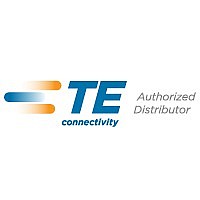324988 Tyco Electronics, 324988 Datasheet - Page 5

324988
Manufacturer Part Number
324988
Description
CONN SPLICE BUTT CERTI 22-18AWG
Manufacturer
Tyco Electronics
Series
Certi-Seal™r
Datasheet
1.324544.pdf
(14 pages)
Specifications of 324988
Terminal Type
Butt Splice, Inline, Individual Openings
Number Of Wire Entries
2
Termination
Crimp
Wire Gauge
18-22 AWG
Insulation
Fully Insulated
Features
Serrated Mating Area
Color
Natural
Lead Free Status / RoHS Status
Lead free / RoHS Compliant
3.4. Wire Placement
The stripped wire must be inserted into the wire barrel until the wire insulation is against the wire barrel but not
inside it. The wire insulation must be inside the metal sleeve. A gap between the wire insulation and wire barrel
is allowed, but not to exceed the dimension given in Figure 3.
3.5. Crimp Requirements
Rev E
PIDG Terminals, Splices, and End Caps
NOTE
NOTE
NOTE
A. Crimp Height
The spring–back of the terminal, splice, or end cap insulation prevents an accurate direct measurement of
crimp height. However, crimping a slug of solder (60% tin and 40% lead) with a diameter slightly larger
than the conductor outside diameter can verify proper termination. The crimp height of the resulting solder
slug can be checked with a standard micrometer or comparator. The measurement must be made over
the most compressed area of the solder slug. See Figure 4.
B. Wire Barrel Crimp Profile and Location
The wire barrel crimp produced by the tooling (dies, heads, hand tools, pneumatic tools, or machines)
must be either a confined crescent crimp which appears as a depressed oval shape or a flat rectangular
crimp over the center of the wire barrel. The crimp must be evenly formed. Refer to Figures 4, 5, and 11.
Crescent crimp tooling produces the crescent crimp, and TETRA–CRIMP tooling produces the flat
rectangular crimp. For a tooling–to–crimp profile cross–reference, refer to Figure 10.
C. Dot Code
The dot code on the insulation must be well formed and correspond with the wire size or color code
marking on the crimping chamber of the tooling used. See Figures 4 and 5.
D. Bellmouths
There shall be no rear bellmouth. The front bellmouth shall be evident on the top and bottom of the wire
barrel as shown in Figure 5. Also see Figure 11.
i
i
i
The wire conductor(s) must not be nicked, scraped, or cut during the stripping operation.
Some tooling with multiple crimping chambers form an embossed dot code in the terminal, splice, or end cap
insulation that indicates which crimping chamber was used. This dot code can be used as a visual inspection to ensure
that the correct wire size and crimping chamber were used.
The resilience of the splice insulation prevents accurate direct measurement of crimp height. Crimp height can be
obtained by measuring a crimped solder slug (60% tin and 40% lead) with a diameter comparable to the wire size.
The slug must be measured over the most compressed area of the slug with a standard micrometer or crimp height
comparator (refer to 408-7424 for specific instructions). The solder slug diameter and crimp height must be within the
dimensions provided in Figure 4.
Splice
Insulation
Transparent Insulation Window Butt Splice Shown
Maximum Gap
Wire Barrel
Tyco Electronics Corporation
1.59 [.062]
Figure 3
Metal Sleeve
Wire Insulation May Butt Against,
But Not Enter, Wire Barrel
Wire Insulation Must Be
Inside Metal Sleeve
114-2157
5 of 14














